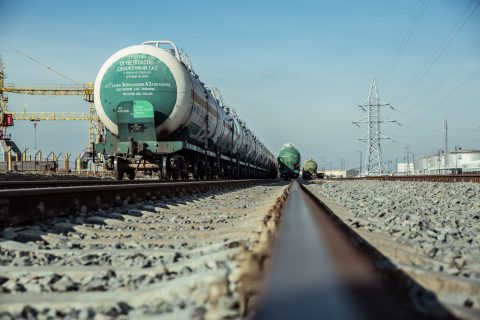ITI corridor to assume services as part of New Silk Road

Turkey, Iran and Pakistan want to revive services of the Istanbul-Tehran-Islamabad train this year. Pakistan wants to connect this line with China’s Belt and Road network through Pakistan’s ML-1 railway line, the largest component of the China-Pakistan economic corridor (CPEC). Despite the potential, the realisation of this project still faces some infrastructural and financial hurdles.
The Istanbul-Tehran-Islamabad, or ITI corridor, was launched in 2009 within the framework of the Economic Cooperation Organization (ECO), an Asian political and economic intergovernmental organisation. Various test journeys were carried out, but it has not become a stable regular service since then. A year ago, rumours concerning the service’s re-operation made the news, but they remained theory.
What’s different this time?
Covid-19 and the developing rail connections in Turkey and Iran seem to have re-sparked China’s interest in the ITI transnational corridor. More specifically, China is looking at the ITI as an alternative to other routes of the New Silk Road that might present congestions. Moreover, China realises that it can prove to be quite profitable due to its relatively fast transit times. Namely, the train can cover 6,5000 kilometres in 11,5 days.

Turkey-China
Both Turkey and China recognise the mutual benefits that they could gain from the operation of this service. The two countries already connect frequently through the container train service running between Istanbul and Xi’an. The particular connection uses the Middle Corridor and functions as an additional link between the EU and China. Turkey is gaining more attention as a transport hub between the west and the east and seems willing to expand its connections and explore new routes. On its behalf, China recognises Turkey’s importance and shares its vision to expand rail routes between them.
Iran
Iran’s role in the equation is similar. The Middle-Eastern country recently launched a new rail link with Afghanistan (December 2020) and finds itself amidst a programme to expand its rail network and increase rail’s shares in freight transport. More than 1,600 route kilometres are, currently, under construction in the country which is already among the most crucial transhipment destinations of the New Silk Road. Simultaneously, there are plans to connect the country’s ports in the Gulf with the hinterland and international destinations by rail.
In overall, Iran seems dedicated to playing a central role in Asian transportation and proves it with the well-calculated projects it undertakes. Subsequently, reviving the ITI container train service would be more than beneficial in realising its goals for connectivity and strengthening its relationship with China.
Possible hurdles
The only problem challenging the ITI train to get back on tracks is the final and weaker part of the equation: Pakistan. The ML-1 railway project is still unfinished and without it running trains through the Balochistan Province in Pakistan is impossible. Infrastructure in this region cannot handle the same trains as in Turkey and Iran. Tracks are over a century old, and natural conditions do not make the situation easier since sand dunes cover them in many parts. It is critical for the ML-1 project to get finalised to connect ITI with BRI since this connection seems to be the prerequisite for the re-opening of the line.
However, this is the point where the situation gets complicated. Despite China’s geopolitical interest in the corridor, it is unwilling to shoulder all the expenses for the conclusion of works on its final part. From China’s perspective, the other three countries will also benefit significantly from the resuming of services. As a result, it is asking from Pakistan to find external funds to reconstruct ML-1. In case this doesn’t happen, Turkey and Iran should contribute too, as China considers them to be equal players in the same game.
Consequently, the re-opening of the ITI railroad is not going to be as simple as believed. In contrast, it constitutes a powerplay involving mainly political decisions. What remains now is to see whether Turkey and Iran will decide to get at the forefront, or if Pakistan will manage to complete ML-1 with external funding other than China’s. Unless any of these scenarios become true, ITI will remain a theoretical question without answers.
You just read one of our premium articles free of charge
Want full access? Take advantage of our exclusive offer





